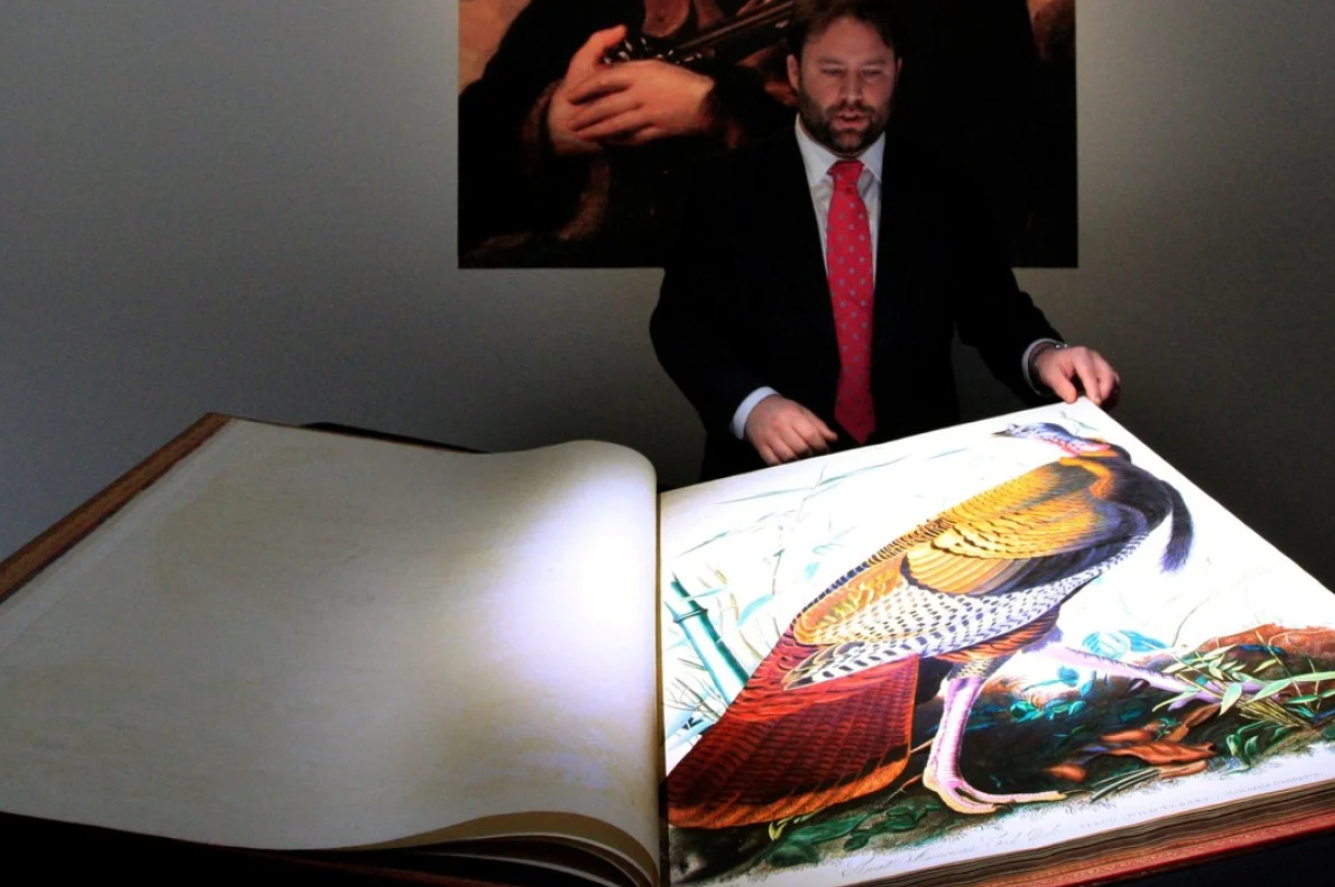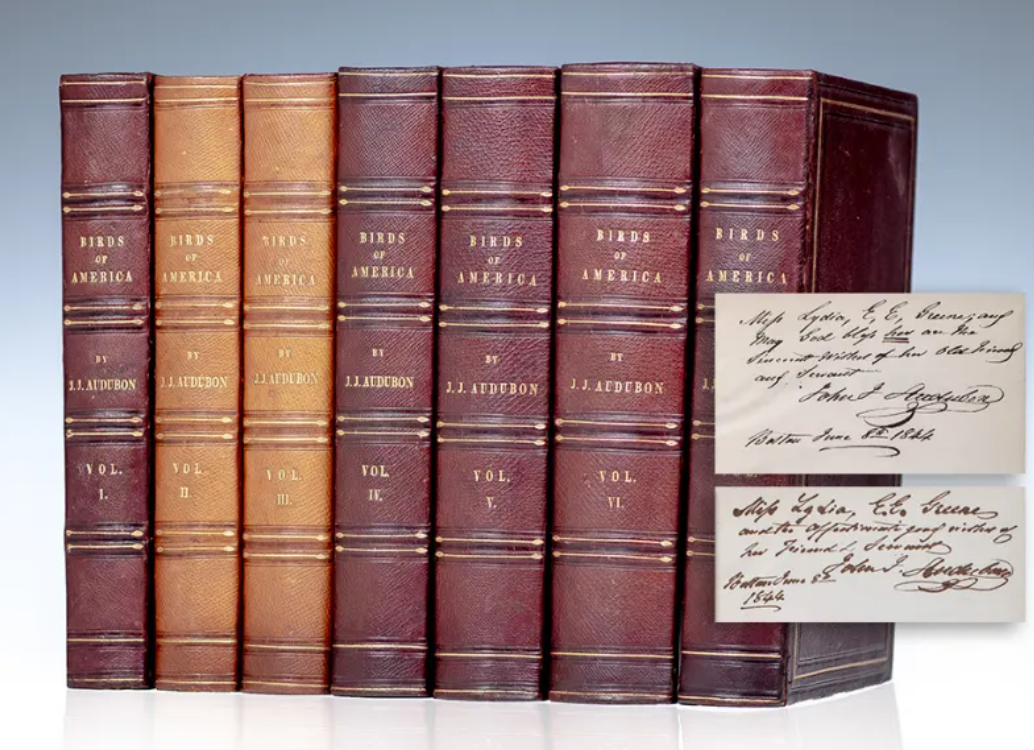Birds of America
John James Audubon began working on Birds of America, a collection of illustrations and research on every bird in North America unlike anything done before, in 1820. Over the next decade, Audubon would prove himself to be a meticulous researcher, fully dedicated to capturing every species of North American birds in a realistic style that he spent many years perfecting.
During the creation of Birds of America, Audubon tried to paint one page every day, abandoning the more popular and respected oil paints in favor of watercolor paints and pastel crayons. Rather than painting from life, he created realistic taxidermy statues of the birds to use as reference He worked with other artists, naturalists, and ornithologists, but he produced the majority of Birds of America himself.
In 1824, Audubon looked for publishers for his growing collection of bird illustrations but failed to find support in America, so he sailed to England in 1826, where he garnered enough attention and fame to eventually raise the money to publish his work.

Havell Edition (or Double Elephant Folio)
The original publication of Birds of America, referred to as the Havell Edition and the Double Elephant Folio interchangeably, was printed on handmade paper at the impressive dimensions of 39.5 x 28.5 inches using mainly copperplate etching and assembly-line style coloring with the help of over fifty colorists. Audubon released four hundred thirty-five plates based on his original paintings as a subscription to fund the printing process and garnered influential subscribers such as Daniel Webster, King Charles X, and Queen Adelaide of Saxe-Meiningen. Accompanying text was released separately under the title Ornithological Biography, or, An account of the habits of the birds of the United States of America.

Royal Octavo Edition
Eventually, Audubon released the Royal Octavo edition, a smaller and more affordable version of the original, between 1840 and 1844, and his family released five more octavo editions by 1877. The octavo editions include the text from Ornithological Biography and bring the number of plates to five hundred by separating some species that Audubon originally illustrated together in the original four hundred thirty-five.
Only one hundred twenty complete sets of the original Double Elephant Folio are currently known to exist, many of which are owned by universities such as Trinity College and the University of Pittsburgh and museums such as the Stark Museum of Art and the Field Museum of Natural History, as well as a variety of libraries, in the United States, Europe, and Australia. The plates are avalible as a digital collection on the National Audubon Society's website.